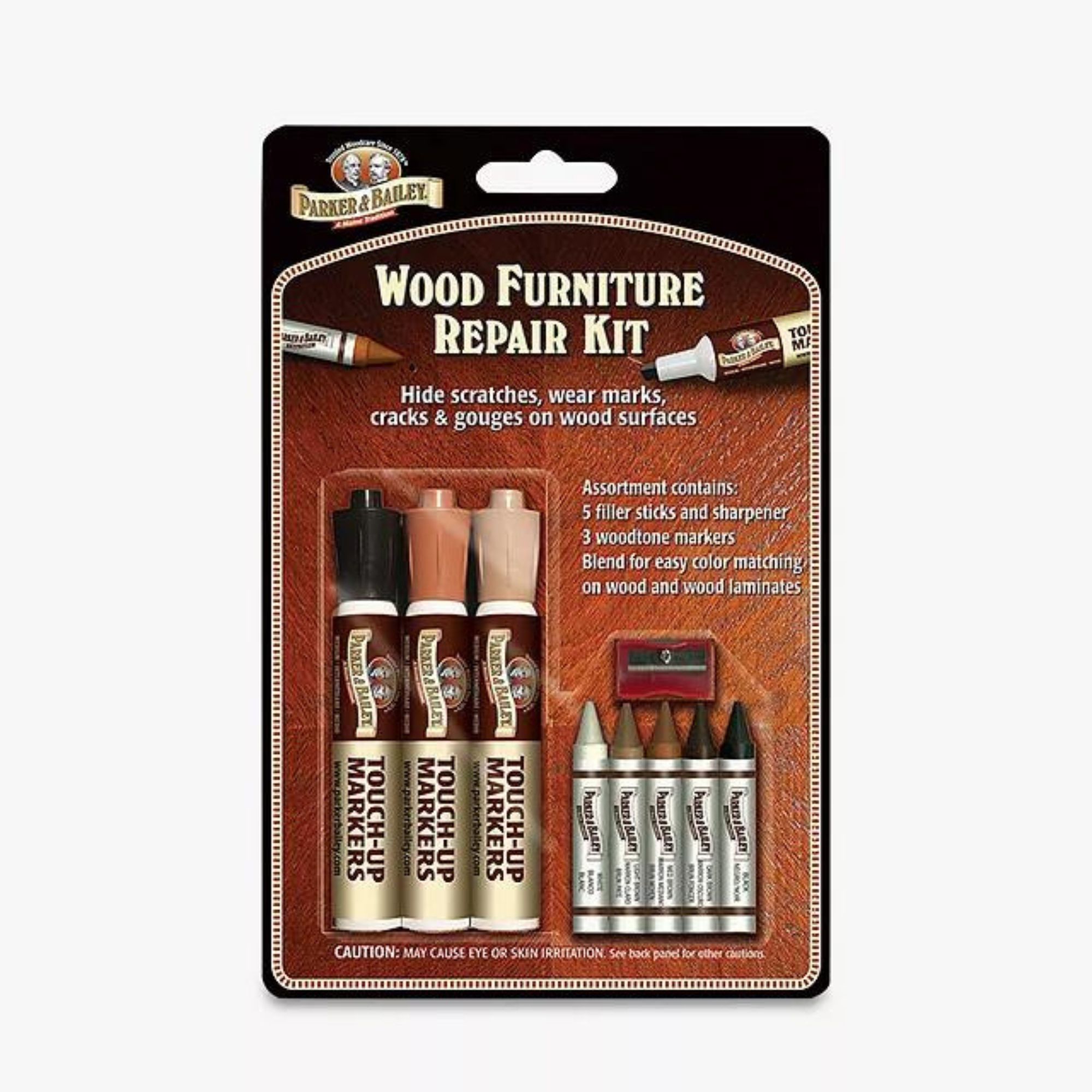How to fix chipped paint on furniture - 3 quick and easy ways to refresh wear and tear
Give your old furniture a new lease of life
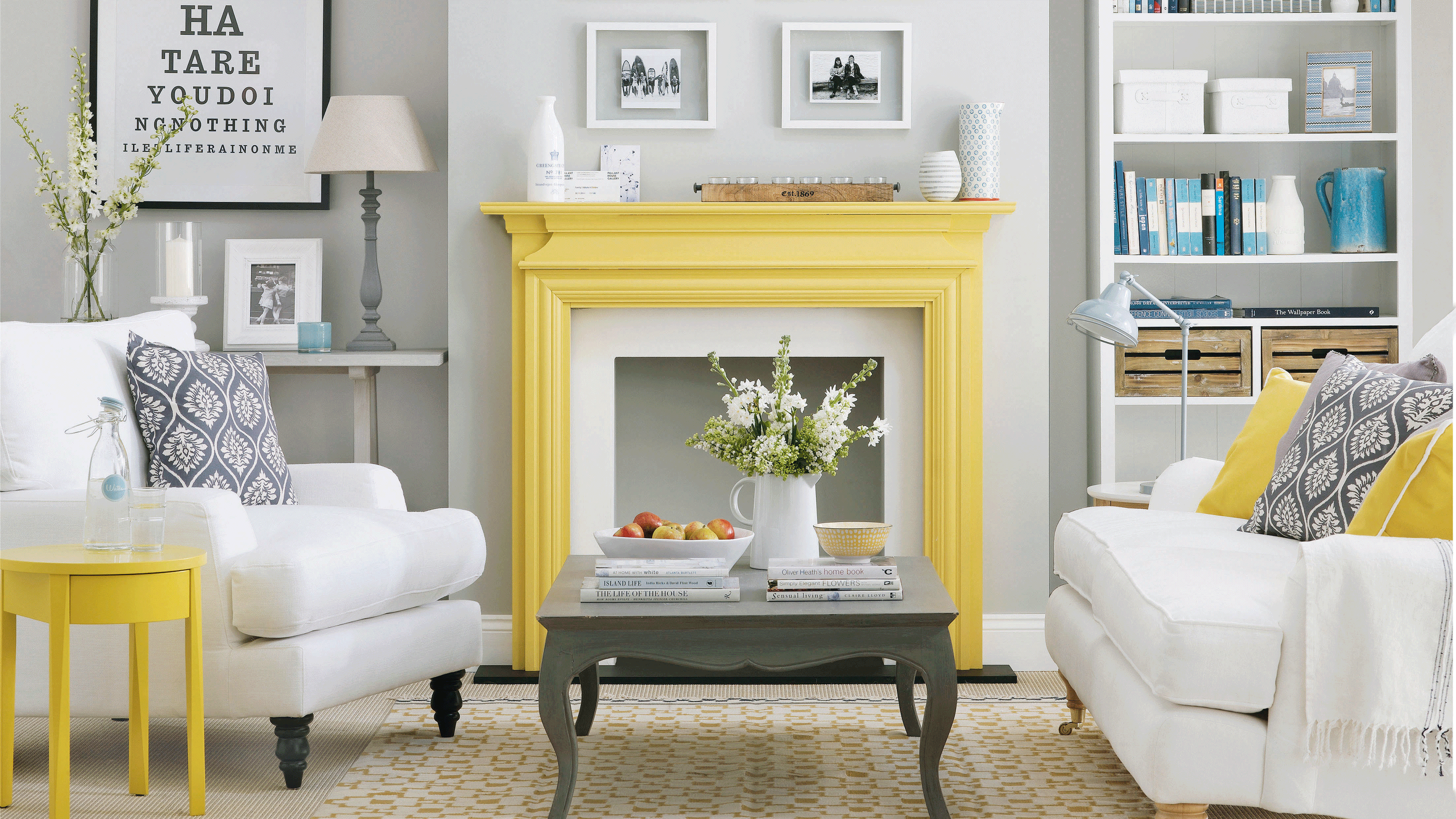

We’re going to go ahead and assume that Googling ‘how to fix paint chips in furniture’ is something you probably never wanted to do.
After all, there’s nothing more annoying than knocking into your favourite piece of furniture and chipping some of the paint. The wood grain stares back up at you, taunting your clumsiness and making the coffee table or chest of drawers look old and worn.
Of course, general wear and tear is unavoidable. But if you’re looking to refresh your home for free and want to know how to fix paint chips, you’ll be happy to know that there are a few different options to choose from.
And these hacks aren’t just for accident-prone homeowners, either. If you’re constantly on the lookout for upcycling ideas, this is for you, too.
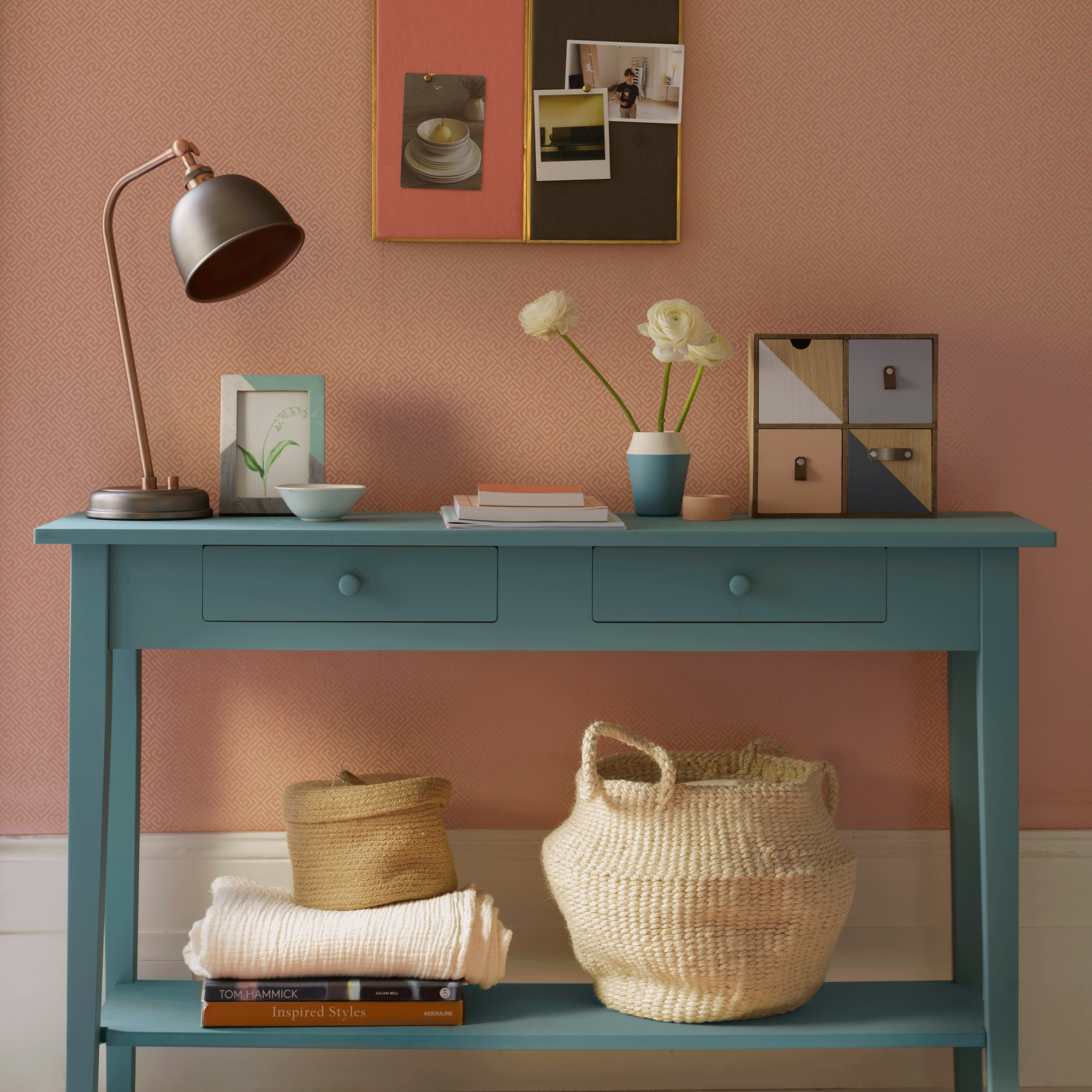
How to fix furniture paint chips
‘Chipped paint on wooden furniture is very common, especially in high-traffic areas such as the hallway,’ explains Sophie Smith at Zhoosh Paints. But don’t get a chip on your shoulder next time you chip your paint. It’s a pretty simple fix if you know what you’re doing.
Colour-matching your paint
Before you decide how you want to fix the paint chips in your furniture, you first need to find your paint. And while there are so many amazing furniture paints out there, choosing the wrong shade of green could turn your emerald beauty into a Shrek-like accident.
So, you need to try and find a near-perfect colour match. Ideally, you should remember the name or shade you used to paint the furniture in the first place. But we know that’s not always possible - especially if you purchased the piece of furniture ready-painted.
Sign up to our newsletter for style inspiration, real homes, project and garden advice and shopping know-how
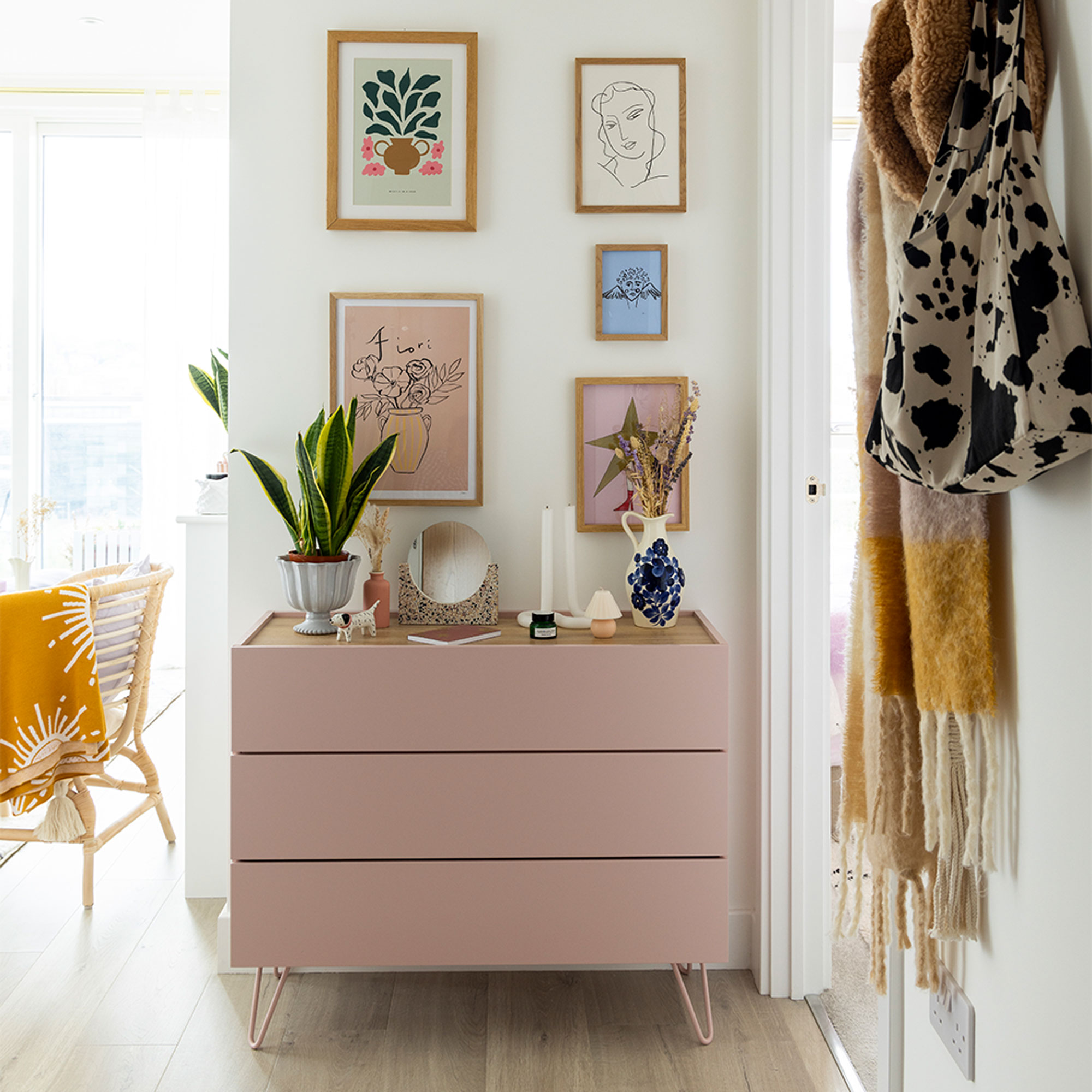
If this is the case, we’d recommend taking a small piece of the furniture with you to the nearest paint shop and asking them to mix a shade that’s as close to the original as possible. For example, you could take a drawer from your chest of drawers, or you could remove a door from a cabinet.
If the chip is on a solid piece of furniture that can’t be transported, try and take a photo in the most natural light possible and show it to them instead. They won't be able to colour match it as well but it will help.
The sanding method
Sandpaper is a DIY staple and something that most people have in their garages. And you might be happy to know that this sandpaper can be used to fix furniture paint chips. First, though, you need to make sure that you clean the affected area with soapy water to remove any dirt or grime.
‘Once the area is dry, you can level the surface with an 80-120 grit sandpaper, using small, circular motions without pressing too hard. Finish by gently rubbing with 360-600 grit sandpaper and wiping down with a dry cloth,’ explains Sophie.
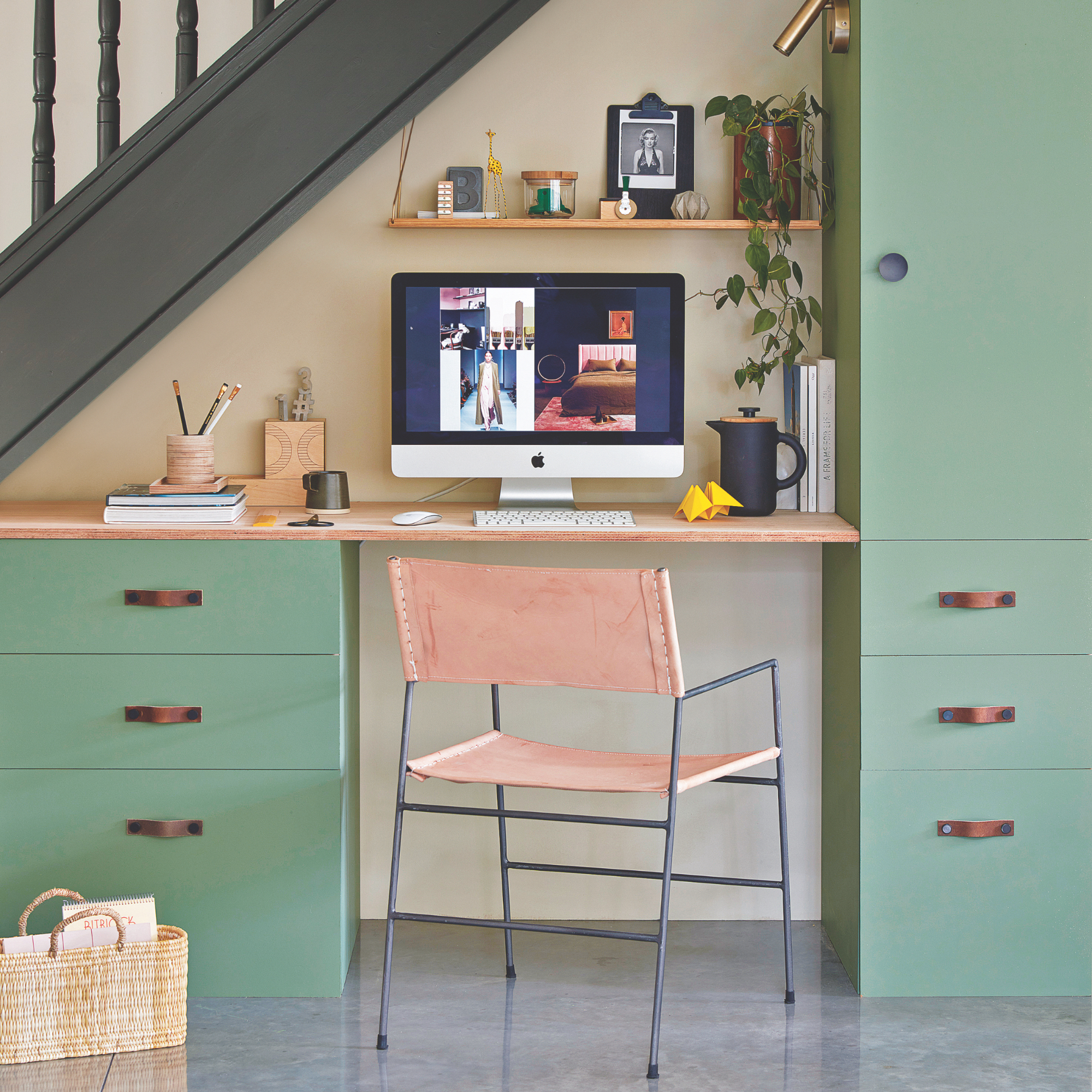
Of course, sanding this area may strip paint from the wood. But when you have a smooth surface, you can paint this area with a primer and then with your colour-matched paint.
However, it’s important to note that this method is only really successful when you have smaller chips. If you’re dealing with a deeper chip, keep reading.
The wood filler method
If you have a deeper chip that has also dented the wood, sanding the affected area won’t help. Instead, you need to focus on filling this chip using a wood filler - like this Polycell Wood Filler from Amazon.
‘Start by rubbing the area with a fine-grit sandpaper, then apply filler to the chip using a putty knife. Once dried, sand and smooth. Finally, use a primer and matching paint with either a roller or spray to paint over the area for a flawless finish,’ suggests Emma Bestley, Co-founder and Creative Director for YesColours.
You can buy all kinds of wood fillers, from foams to putty and wax. And if you’ve chipped wood that’s painted or stained in a natural wood colour, Briwax Wax Filler Sticks could work better than putty. These come in natural wood colours, which means you might not even need to paint over them.
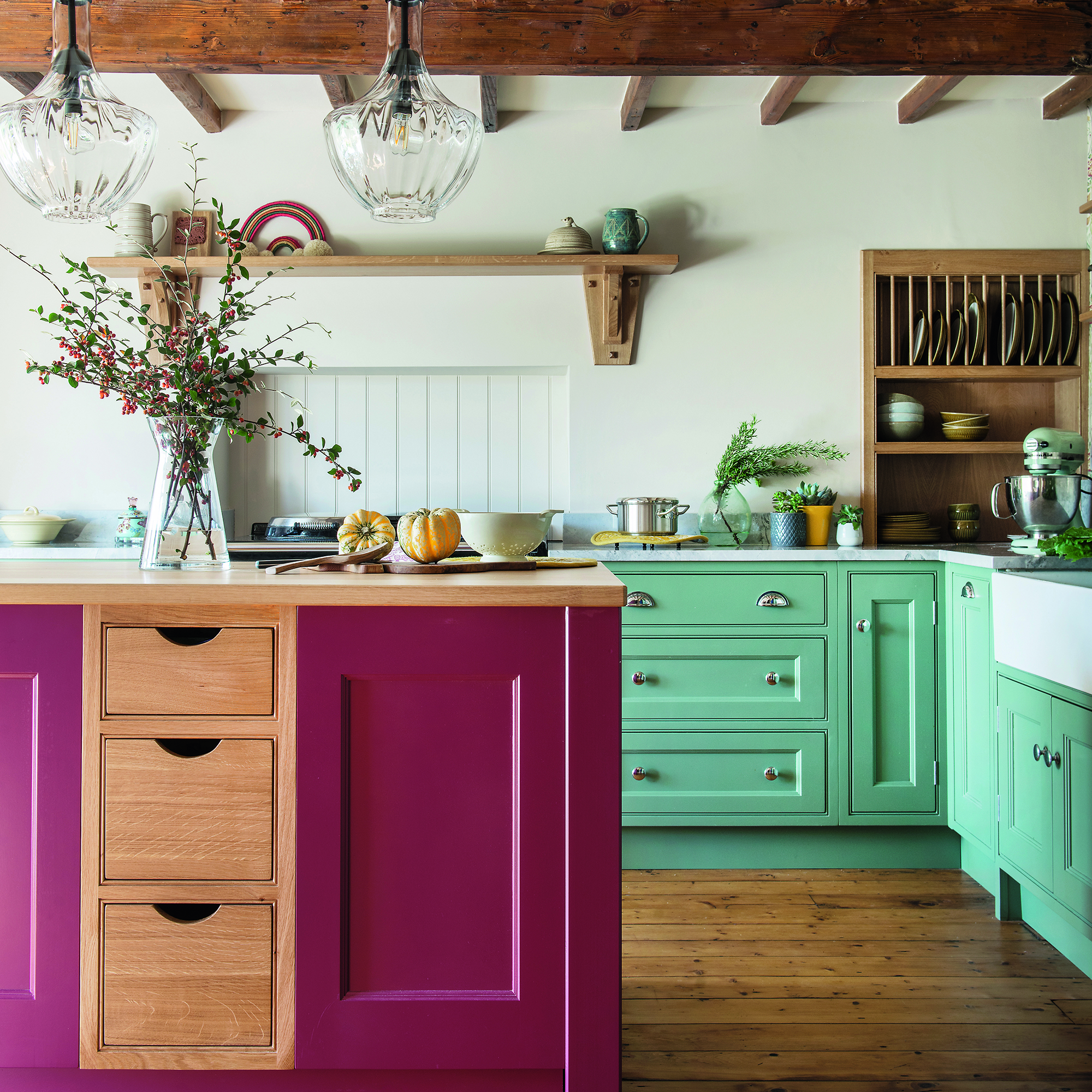
The marker method
If you’re dealing with an old piece of furniture and you prefer the older, more rustic aesthetic, filling the chips might not be worth your time or energy. Instead, you might just want to cover up the slight change in colour - and that’s where the marker method comes into play.
There are so many brands out there that offer marker-pen-like products that allow you to “colour in” the paint chips. Of course, you’re limited on the colour options, but there are always going to be white, black, and wood-coloured options to choose from.
This is by far the easiest option for those who have unpainted or stained wooden furniture, as colouring in the chips will take just a few seconds. Plus, you have the added bonus of having the pen on hand for any chips you may encounter in the future.
FAQs
How do you fix chipped paint on furniture?
There are three main ways to fix chipped paint on furniture. In some cases, using a paint marker or just painting over the chip will do the trick. However, this will only work if the chip is very small and barely noticeable.
If you have a larger chip that’s more noticeable, you have two options. You could either sand down the affected area and create a smoother surface to paint, or you could buy a specific wood filler to fill the chip before painting over it.
Whatever you choose, it’s important to paint any chips in furniture paint with paint that’s as close in colour to the original as possible. If not, the area might stick out like a sore thumb.
Can I paint over chipped paint on furniture?
Yes, you can simply paint over chipped paint on furniture. This is an easy way to solve a chopped paint problem, especially if the chip is small and barely noticeable.
However, it might not work if the chip is so deep it’s dented the furniture underneath. If this is the case, it’s best to look into alternative options. You could sand around the edges to make the chip less noticeable, or you could fill it with wood filler.

Lauren Bradbury has been the Content Editor for the House Manual section since January 2025 but worked with the team as a freelancer for a year and a half before that. She graduated with a Bachelor’s degree in English and Creative Writing from the University of Chichester in 2016. Then, she dipped her toe into the world of content writing, primarily focusing on home content. After years of agency work, she decided to take the plunge and become a full-time freelancer for online publications, including Real Homes and Ideal Home, before taking on this permanent role. Now, she spends her days searching for the best decluttering and cleaning hacks and creating handy how-to guides for homeowners and renters alike, as well as testing vacuums as part of her role as the Ideal Home Certified Expert in Training on Vacuums, having spent over 110 hours testing different vacuum models to date!
